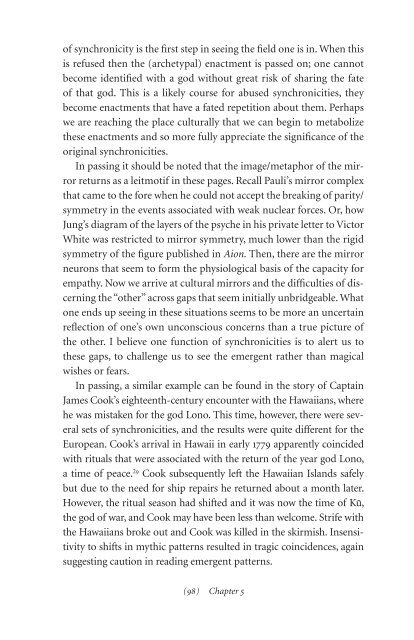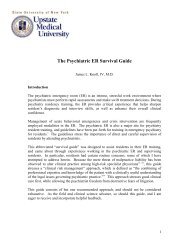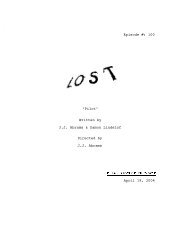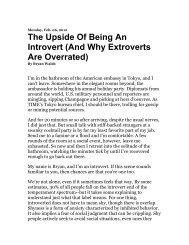Synchronicity Cambray
Synchronicity Cambray
Synchronicity Cambray
You also want an ePaper? Increase the reach of your titles
YUMPU automatically turns print PDFs into web optimized ePapers that Google loves.
of synchronicity is the first step in seeing the field one is in. When this<br />
is refused then the (archetypal) enactment is passed on; one cannot<br />
become identified with a god without great risk of sharing the fate<br />
of that god. This is a likely course for abused synchronicities, they<br />
become enactments that have a fated repetition about them. Perhaps<br />
we are reaching the place culturally that we can begin to metabolize<br />
these enactments and so more fully appreciate the significance of the<br />
original synchronicities.<br />
In passing it should be noted that the image/metaphor of the mirror<br />
returns as a leitmotif in these pages. Recall Pauli’s mirror complex<br />
that came to the fore when he could not accept the breaking of parity/<br />
symmetry in the events associated with weak nuclear forces. Or, how<br />
Jung’s diagram of the layers of the psyche in his private letter to Victor<br />
White was restricted to mirror symmetry, much lower than the rigid<br />
symmetry of the figure published in Aion. Then, there are the mirror<br />
neurons that seem to form the physiological basis of the capacity for<br />
empathy. Now we arrive at cultural mirrors and the difficulties of discerning<br />
the “other” across gaps that seem initially unbridgeable. What<br />
one ends up seeing in these situations seems to be more an uncertain<br />
reflection of one’s own unconscious concerns than a true picture of<br />
the other. I believe one function of synchronicities is to alert us to<br />
these gaps, to challenge us to see the emergent rather than magical<br />
wishes or fears.<br />
In passing, a similar example can be found in the story of Captain<br />
James Cook’s eighteenth-century encounter with the Hawaiians, where<br />
he was mistaken for the god Lono. This time, however, there were several<br />
sets of synchronicities, and the results were quite different for the<br />
European. Cook’s arrival in Hawaii in early 1779 apparently coincided<br />
with rituals that were associated with the return of the year god Lono,<br />
a time of peace. 29 Cook subsequently left the Hawaiian Islands safely<br />
but due to the need for ship repairs he returned about a month later.<br />
However, the ritual season had shifted and it was now the time of Kū,<br />
the god of war, and Cook may have been less than welcome. Strife with<br />
the Hawaiians broke out and Cook was killed in the skirmish. Insensitivity<br />
to shifts in mythic patterns resulted in tragic coincidences, again<br />
suggesting caution in reading emergent patterns.<br />
( 98 ) Chapter 5









